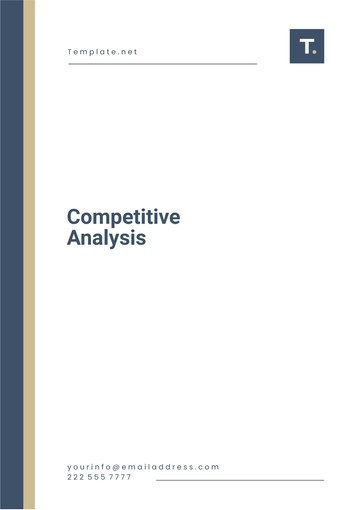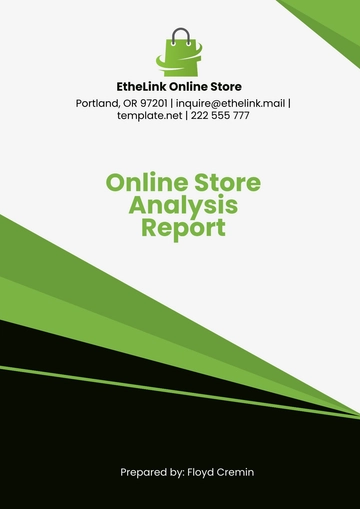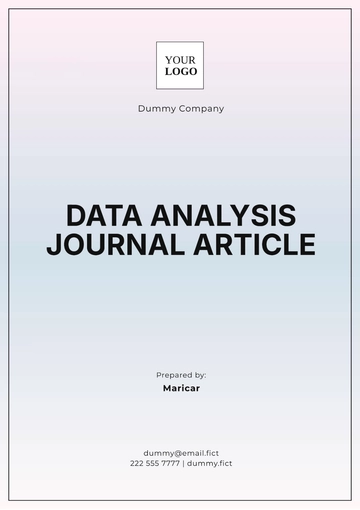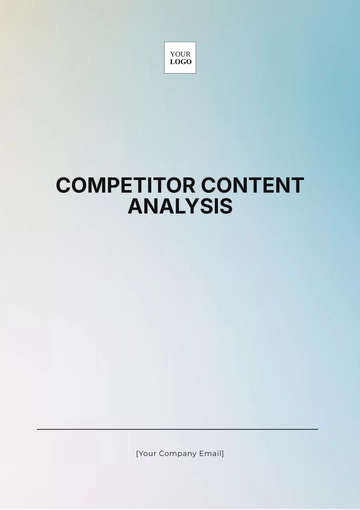Free Travel Agency Analysis Guide

I. Introduction
A. Purpose of the Guide
Comprehensive Understanding: The guide provides a comprehensive understanding of the various aspects of our travel agency’s operations. It covers everything from services analysis to SWOT analysis, providing a detailed overview of our business.
Strategic Decision-Making: The guide aids in strategic decision-making by providing valuable insights into our strengths, weaknesses, opportunities, and threats. It helps us make informed decisions that align with our business goals.
Performance Improvement: By identifying areas of strength and opportunities for improvement, the guide helps us enhance our performance. It provides a roadmap for continuous improvement, helping us stay competitive in the ever-changing travel industry.
Employee Training: The guide serves as a valuable resource for training our employees. It helps new hires understand our operations and market position, and provides seasoned professionals with a refresher on our strategic objectives.
Standardization: The guide helps standardize the way we conduct our business analysis. It ensures that everyone in our team follows the same approach, leading to consistent and reliable results. This standardization is crucial for comparing results over time and making accurate forecasts.
B. Scope of the Guide
Content Coverage: The guide covers a wide range of topics crucial to the operation and success of our travel agency. It includes sections on services analysis, market analysis, marketing and sales strategy, financial analysis, and SWOT analysis.
Target Audience: It is primarily written for our team members. It’s designed to be user-friendly, ensuring that everyone, from new hires to seasoned professionals, can understand and apply the concepts presented.
Practical Application: It is designed for practical application. The insights and strategies presented in the guide can be directly applied to our day-to-day operations and strategic planning.
II. Services Analysis
A. Identifying and Describing Services Offered
Service Catalogue: Create a comprehensive catalogue of all the services offered by [Your Company Name]. This could include ticket booking, accommodation arrangement, travel insurance, and more. This catalogue serves as a reference point for both our team and our customers.
Service Description: For each service in the catalogue, provide a detailed description. This should include what the service entails, how it is delivered, and its value to the customer. This helps our team understand and communicate the value of our services effectively.
Service Differentiation: Highlight how each service is unique or superior to similar services offered by competitors. This could be in terms of quality, price, delivery, customer service, or any other aspect that adds value for the customer.
Service Evolution: Keep track of how each service evolves over time. This could be due to changes in customer preferences, market trends, technological advancements, or internal improvements. This helps [Your Company Name] stay relevant and competitive.
Service Feedback: Regularly collect and analyze feedback on each service from customers. This helps [Your Company Name] understand what we are doing well and where we can improve.
B. Determining Unique Selling Propositions
Identifying USPs: For each service, identify the unique selling propositions (USPs). These are the factors that make our service stand out from the competition. They could be related to the quality, price, delivery, customer service, or any other aspect of the service.
Validating USPs: Validate the USPs by getting feedback from customers and analyzing market trends. This helps [Your Company Name] ensure that our USPs are indeed unique and valuable to our customers.
Leveraging USPs: Use the USPs in our marketing and sales strategies to attract and retain customers. Highlighting our USPs helps [Your Company Name] differentiate ourselves from the competition and gives customers a reason to choose us.
Evolving USPs: Keep track of how our USPs evolve over time. This could be due to changes in customer preferences, market trends, technological advancements, or internal improvements. This helps [Your Company Name] stay relevant and competitive.
C. Mapping the Service Delivery Process
Mapping the service delivery process is a crucial step in understanding how [Your Company Name] delivers its services to customers. It helps identify potential bottlenecks and areas for improvement. The table below provides an overview of the steps:
No. | Step |
|---|---|
1 | Identify all the steps involved in delivering each service. |
2 | Document the steps in a sequential order. |
3 | Identify the resources needed for each step. |
4 | Determine the time taken for each step. |
5 | Identify the potential challenges or issues in each step. |
Now, let’s delve deeper into each step:
Identifying the Steps
1.1. Service Breakdown: Start by breaking down each service offered by [Your Company Name] into individual steps. This could include initial consultation, booking, providing the service, and follow-up.
1.2. Process Flow: Once the steps are identified, arrange them in the order they occur. This helps visualize the flow of service delivery.
Documenting the Process
2.1. Process Documentation: Document the steps in a sequential order. This provides a clear roadmap of the service delivery process and helps identify any gaps or inefficiencies.
2.2. Process Review: Regularly review and update the process documentation to ensure it accurately reflects the current service delivery process.
Resource Identification
3.1. Resource Listing: For each step, identify the resources needed. This could include staff, equipment, technology, and time.
3.2. Resource Allocation: Ensure that adequate resources are allocated to each step to ensure efficient service delivery.
Time Estimation
4.1. Time Tracking: Determine the time taken for each step. This can help identify bottlenecks and areas for improvement.
4.2. Time Optimization: Look for ways to reduce the time taken for each step without compromising on service quality.
Identifying Challenges
5.1. Challenge Identification: Identify the potential challenges or issues in each step. This could include resource constraints, technical issues, or customer-related challenges.
5.2. Problem Solving: Develop strategies to overcome these challenges. This could involve process improvements, resource allocation changes, or staff training.
After mapping the service delivery process, it’s important to regularly review and update the process to ensure it remains efficient and effective. This can help in improving service quality, reducing costs, and enhancing customer satisfaction. This process is crucial for [Your Company Name] as it directly impacts customer experience and satisfaction. It also affects our operational efficiency and profitability. By regularly reviewing and improving our service delivery process, we can ensure that we continue to meet and exceed customer expectations while also improving our bottom line.
III. Market Analysis
A. Identifying the Target Market
Identifying the target market is the first step in understanding who our potential customers are. It involves segmenting the market based on various factors and identifying the segment(s) that [Your Company Name] can best serve.
Demographic Segmentation: Start by segmenting the market based on demographic factors such as age, gender, income level, education level, etc. This helps us understand who our potential customers are and what their needs and preferences might be.
Geographic Segmentation: Next, segment the market based on geographic location. This could be local, regional, national, or international, depending on the reach of [Your Company Name]'s services.
Psychographic Segmentation: Further segment the market based on lifestyle, attitudes, and behaviors. This helps us understand why our potential customers make the choices they do.
Behavioral Segmentation: Finally, segment the market based on customer behavior. This includes factors like usage rate, loyalty status, readiness to buy, etc.
Target Market Selection: After segmenting the market, identify the segment(s) that [Your Company Name] can best serve. This is our target market.
B. Assessing Market Size and Trends
Once we have identified our target market, the next step is to assess the size of this market and the trends that are shaping it.
Market Size Estimation: Estimate the size of our target market in terms of number of potential customers or total revenue. This gives us an idea of the potential for growth.
Market Growth Rate: Determine the growth rate of our target market. This can be done by analyzing historical data and forecasting future trends. A growing market presents opportunities for expansion.
Market Trends: Identify the key trends in our target market. This could include changing customer preferences, technological advancements, regulatory changes, etc. Staying on top of these trends helps [Your Company Name] stay relevant and competitive.
Market Opportunities: Based on the market size, growth rate, and trends, identify the opportunities that exist for [Your Company Name]. This could include unmet customer needs, underserved market segments, etc.
Market Challenges: Also identify the challenges that [Your Company Name] might face in the target market. This could include intense competition, regulatory hurdles, etc. Understanding these challenges helps us prepare for them.
C. Conducting a Competitor Analysis
Understanding the competition is a crucial part of market analysis. It helps understand the position in the market and identify strategies to differentiate the services. The following table showcases an overview of the steps:
No. | Step |
|---|---|
1 | Identify the main competitors. |
2 | Analyze their services, pricing, marketing strategies, etc. |
3 | Identify their strengths and weaknesses. |
4 | Understand their USPs. |
5 | Determine their market share. |
Now, let’s delve deeper into each step:
Identifying the Main Competitors
1.1. Local Competitors: Start by identifying local travel agencies that offer similar services. These are the competitors that [Your Company Name] encounters on a daily basis.
1.2. Online Competitors: In today’s digital age, it’s also important to consider online competitors. These could be online travel agencies or platforms that offer travel booking services.
1.3. Indirect Competitors: Don’t forget about indirect competitors. These are businesses that offer alternative solutions to the same customer needs. For example, a customer might choose to plan their own trip instead of using a travel agency.
Analyzing Their Services, Pricing, Marketing Strategies, etc.
2.1. Service Comparison: Compare the services offered by the competitors with those of [Your Company Name]. Look at the variety, quality, and delivery of the services.
2.2. Pricing Comparison: Compare the pricing strategies of the competitors. Understand how their prices compare to ours and what value they offer for the price.
2.3. Marketing Strategy Analysis: Analyze the marketing strategies of the competitors. Look at their promotional activities, advertising channels, and messaging.
Identifying Their Strengths and Weaknesses
3.1. Strengths: Identify what the competitors do well. This could be anything from a wide range of services, superior customer service, to a strong brand reputation.
3.2. Weaknesses: Identify where the competitors fall short. This could be anything from limited service offerings, poor customer service, to a weak online presence.
Understanding Their USPs
4.1. Unique Services: Identify any unique services that the competitors offer. These are services that set them apart from other travel agencies.
4.2. Unique Selling Propositions: Identify the unique selling propositions of the competitors. These are the factors that make their services stand out from the competition.
Determining Their Market Share
5.1. Direct Market Share: Estimate the direct market share of the competitors. This is the percentage of the total market sales that they capture.
5.2. Indirect Market Share: Estimate the indirect market share of the competitors. This is the percentage of the total market sales that they capture through indirect competition.
After conducting the competitor analysis, use the insights to improve the services, develop effective marketing strategies, and gain a competitive edge in the market. This analysis is crucial for understanding where [Your Company Name] stands in the market and how we can differentiate our services.
IV. Marketing and Sales Strategy
A. Formulating a Marketing Strategy
Defining Marketing Objectives: Start by defining clear and measurable marketing objectives. These could include increasing brand awareness, acquiring new customers, retaining existing customers, etc. These objectives guide our marketing efforts and provide a benchmark for measuring success.
Identifying Marketing Channels: Identify the most effective channels to reach our target market. These could include social media, email marketing, SEO, etc. The choice of channels depends on where our target customers are most likely to be found and what kind of content they engage with.
Creating a Content Strategy: Develop a content strategy that aligns with our marketing objectives and resonates with our target market. This could include blog posts, social media updates, newsletters, etc. The content should be informative, engaging, and aligned with our brand.
Setting a Marketing Budget: Determine the budget for our marketing activities. This should take into account the costs of content creation, advertising, and other marketing expenses. The budget should be allocated in a way that maximizes ROI.
Measuring and Adjusting: Regularly measure the results of our marketing efforts and adjust the strategy as needed. This could involve trying out new marketing channels, tweaking the content strategy, or reallocating the budget.
B. Developing a Sales Strategy
Defining Sales Objectives: Define clear and measurable sales objectives. These could include increasing sales volume, improving sales conversion rate, increasing average transaction value, etc. These objectives guide our sales efforts and provide a benchmark for measuring success.
Developing a Sales Process: Develop a structured sales process. This should include prospecting, qualification, presentation, objection handling, closing, and follow-up. A well-defined sales process helps ensure that every customer interaction is handled professionally and effectively.
Training the Sales Team: Provide regular training to our sales team to improve their skills and performance. This could involve product knowledge training, sales skills training, or customer service training. A well-trained sales team is more likely to meet or exceed sales objectives.
Setting Sales Targets: Set realistic but challenging sales targets for the sales team. These targets should align with our sales objectives and motivate the sales team to perform at their best.
Measuring and Adjusting: Regularly measure the results of our sales efforts and adjust the strategy as needed. This could involve changing the sales process, providing additional training, or adjusting sales targets.
C. Setting a Pricing Strategy
Cost-Based Pricing: Determine the cost of delivering each service and add a markup to ensure profitability. This is a straightforward pricing strategy, but it’s important to ensure that the prices are competitive and offer good value to the customers.
Competitor-Based Pricing: Analyze the pricing strategies of the competitors. Understand how their prices compare to ours and what value they offer for the price. This can help [Your Company Name] position itself effectively in the market.
Value-Based Pricing: Set the prices based on the perceived value of the services to the customer. This involves understanding what customers are willing to pay for the value they receive. It’s a customer-centric pricing strategy that can help [Your Company Name] differentiate its services.
Dynamic Pricing: Consider using dynamic pricing, where prices are adjusted based on demand, time, or other factors. This can help optimize revenue and profitability.
Price Testing: Regularly test different pricing strategies and adjust the prices based on the results. This helps ensure that the pricing strategy remains effective over time.
V. Financial Analysis
A. Identifying Revenue Streams
Service Sales: Revenue generated from the sale of services. This is the main revenue stream for most travel agencies.
Product Sales: Revenue generated from the sale of travel-related products. This could include travel accessories, insurance, etc.
Commissions: Revenue earned from commissions on bookings made through partner hotels, airlines, etc. This is a common revenue stream in the travel industry.
Ancillary Services: Revenue generated from ancillary services such as travel consultation, visa assistance, etc.
Partnerships and Collaborations: Revenue generated from partnerships and collaborations with other businesses.
B. Analyzing Cost Structure
Fixed Costs: Costs that do not change with the volume of services delivered. This could include rent, salaries, etc. These costs need to be covered regardless of the revenue generated.
Variable Costs: Costs that change with the volume of services delivered. This could include cost of bookings, commissions paid, etc. These costs increase with the volume of business.
Semi-Variable Costs: Costs that have both fixed and variable components. This could include utilities, marketing expenses, etc. These costs need to be carefully managed to maintain profitability.
Cost Optimization: Regularly review the cost structure and look for ways to optimize costs. This could involve negotiating better deals with suppliers, improving operational efficiency, etc.
Cost Forecasting: Forecast future costs based on historical data and future plans. This helps in budgeting and financial planning.
C. Conducting a Profitability Analysis
Conducting a profitability analysis is crucial for understanding the financial health of [Your Company Name]. It helps us understand whether we are making a profit and where improvements can be made.
No. | Formula |
|---|---|
1 | Gross Profit Margin = (Total Revenue - Cost of Goods Sold) / Total Revenue |
2 | Net Profit Margin = (Total Revenue - Total Expenses) / Total Revenue |
3 | Break-Even Point = Fixed Costs / (Selling Price per Unit - Variable Cost per Unit) |
Gross Profit Margin: Calculate the gross profit margin to understand the profitability of each service. A high gross profit margin indicates that [Your Company Name] is able to deliver services at a low cost. If the gross profit margin is low, it may indicate that the cost of delivering services is too high.
Net Profit Margin: Calculate the net profit margin to understand the overall profitability of the agency. A high net profit margin indicates that [Your Company Name] is able to cover its costs and still make a profit. If the net profit margin is low, it may indicate that the agency needs to control its costs or increase its prices.
Break-Even Analysis: Determine the break-even point to understand how much volume is needed to cover the costs. The break-even point is the point at which total revenue equals total costs. If [Your Company Name] is not able to achieve the break-even volume, it may need to increase its prices or reduce its costs.
Conducting a Profitability Analysis, is a critical part of financial analysis. It provides an in-depth understanding of the agency’s profitability by calculating key metrics. These metrics offer valuable insights into the financial health of the company, guiding strategic decision-making. Regular profitability analysis helps [Your Company Name] stay financially sustainable and identify areas for improvement to enhance profitability.
VI. SWOT Analysis
A. Identifying Strengths
Service Quality: Evaluate the quality of the services offered. High-quality services can be a major strength, contributing to customer satisfaction and loyalty.
Experienced Team: Assess the skills and experience of the team. An experienced and skilled team can be a significant strength, enabling superior services to be delivered.
Strong Brand: Evaluate the brand reputation in the market. A strong brand can be a major strength, helping attract and retain customers.
Efficient Operations: Assess the efficiency of operations. Efficient operations can be a strength, helping deliver services quickly and cost-effectively.
Customer Relationships: Evaluate relationships with customers. Strong customer relationships can be a strength, contributing to customer loyalty and repeat business.
B. Recognizing Weaknesses
Limited Resources: If there are limited resources, this can be a major weakness. This could include financial resources, human resources, or physical resources.
Limited Market Presence: If there is a limited presence in the market, this can be a major weakness. This could be due to a lack of marketing, a small customer base, or limited geographic reach.
High Dependence on Few Customers: If a large portion of revenue comes from a few customers, this can be a major weakness. It increases vulnerability to changes in these customers’ behavior.
Weak Online Presence: If there is a weak online presence, this can be a major weakness in today’s digital age. This could limit the ability to reach potential customers and compete with other travel agencies.
Lack of Diversification: If there is heavy reliance on a single type of service or target market, this can be a major weakness. It increases vulnerability to changes in market demand.
C. Spotting Opportunities
Growing Market: If the travel market is growing, this can be a major opportunity. It indicates a potential for increased demand for services.
Technological Advancements: If there are technological advancements that can be leveraged, this can be a major opportunity. This could include new travel booking platforms, customer relationship management tools, or digital marketing technologies.
Changing Customer Preferences: If customer preferences are changing in a way that favors the services, this can be a major opportunity. This could include a growing preference for personalized travel experiences, sustainable travel, or off-the-beaten-path destinations.
Regulatory Changes: If there are regulatory changes that favor the business, this can be a major opportunity. This could include changes in travel regulations, visa policies, or tourism promotion initiatives.
Strategic Partnerships: If there are opportunities for strategic partnerships, this can be a major opportunity. This could include partnerships with hotels, airlines, or other travel-related businesses.
D. Pinpointing Threats
Intense Competition: If there is intense competition in the travel market, this can be a major threat. It can put pressure on prices, reduce market share, and make it harder to stand out.
Changing Market Trends: If market trends are changing in a way that doesn’t favor the services, this can be a major threat. This could include changes in travel preferences, technological advancements, or regulatory changes.
Economic Downturns: Economic downturns or recessions can be a major threat. They can lead to a decrease in travel demand and make it harder to maintain profitability.
Technological Disruptions: Technological disruptions can be a major threat. This could include new technologies that make current services obsolete or new platforms that disrupt the market dynamics.
Regulatory Changes: Regulatory changes can also be a major threat. This could include new regulations that make it harder to operate or increased compliance costs.
VII. Conclusion and Recommendations
A. Summarizing the Analysis
Key Insights: Start by summarizing the key insights gained from the analysis. This could include insights about the services, market position, financial health, etc. These insights provide a snapshot of where the agency stands and what has been learned.
Strengths and Opportunities: Highlight the strengths and opportunities that have been identified through the analysis. These are the areas where the agency excels and the opportunities that can be leveraged for growth.
Weaknesses and Threats: Acknowledge the weaknesses and threats that have been identified through the analysis. These are the areas where improvement is needed and the threats that need to be mitigated.
Performance Against Objectives: Evaluate the performance against the objectives that were set at the beginning of the analysis. This helps understand whether the objectives have been met and where there were shortfalls.
Lessons Learned: Reflect on the lessons learned from the analysis. This could include insights about the operations, market trends, customer preferences, etc. These lessons can guide future strategies and decisions.
B. Formulating Recommendations
Improvement Areas: Based on the weaknesses identified, recommend areas for improvement. This could include improving service quality, enhancing customer relationships, optimizing costs, etc. These recommendations aim to turn weaknesses into strengths.
Growth Opportunities: Based on the opportunities identified, recommend strategies for growth. This could include expanding into new markets, leveraging technological advancements, capitalizing on changing customer preferences, etc. These recommendations aim to leverage opportunities for growth.
Risk Mitigation: Based on the threats identified, recommend strategies for risk mitigation. This could include diversifying revenue streams, enhancing online presence, staying abreast of regulatory changes, etc. These recommendations aim to mitigate threats and safeguard the agency’s future.
- 100% Customizable, free editor
- Access 1 Million+ Templates, photo’s & graphics
- Download or share as a template
- Click and replace photos, graphics, text, backgrounds
- Resize, crop, AI write & more
- Access advanced editor
Make informed decisions effortlessly with our customizable and editable Travel Agency Analysis Guide Template! This comprehensive document from Template.net offers a structured framework for conducting analysis within your travel agency. Utilize our AI Editor Tool to customize the guide with relevant analysis methods tailored to your agency's objectives! Access immediately!





























